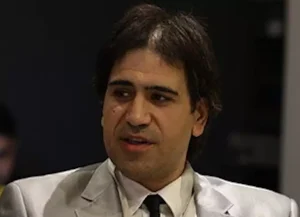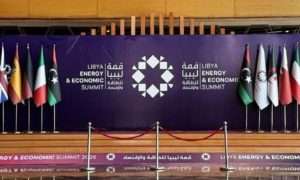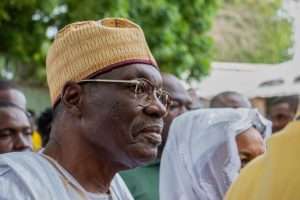China Phobia Impact on US

China has been increasingly seen as a major strategic threat to the US, according to recent statements, attitudes, and practices. The prevailing sentiment among US leaders is that China is preparing to “invade” Taiwan and reclaim it as part of its territory within the next two years.
The US House of Representatives recently held hearings to discuss the Chinese threat, with former Speaker Nancy Pelosi’s visit to Taiwan exacerbating tensions between Beijing and Washington. During the hearings, H. R. McMaster, the former national security adviser, warned that the next two years could be a dangerous period for the US, given the growing possibility of a Chinese attack on Taiwan.
Beijing sees Taiwan as part of its territory and may take advantage of the US preoccupation with the presidential elections to retake the island. This concern has been further fuelled by the release of the Sino-Russian joint statement, which came out of the Xi-Putin summit on the eve of the Beijing Olympics. The statement included a Western-led rhetoric that signalled a new era led by the two new poles, adding to the evidence of China’s growing ambitions.
Overall, the fear of China’s rising power and its potential impact on US interests has sparked a sense of unease and vigilance among US leaders. As the situation continues to unfold, it remains to be seen how the US will respond to this perceived threat.
This statement has helped shape America’s approach towards Russia’s conflict with Ukraine, with some viewing it as a dress rehearsal of what could happen in Taiwan. Those who hold this view believe that Russia’s defeat would serve as a warning to China, and vice versa.
READ: Tunisia drifts towards Russia-China-Iran sphere with Assad plan
However, limiting the struggle for global leadership to the Ukraine conflict or the recapture of Taiwan is a grave mistake. China’s rich cultural and historical heritage means that it is unlikely to back down from a zero-sum struggle.
The US has been making continuous provocations, including building new military bases in Southeast Asia and engineering new alliances aimed at containing China’s strategic rise. China, however, is not following the US’s plan as Putin’s Russia did, but rather pursues its own vision while striving to maintain a fragile balance in its strategic interests with the parties involved in the Ukraine conflict.

One driver of the so-called “Chinaphobia” in American decision-making circles is China’s rapid rise in all fields, not just in the economy and military. Despite its quiet progress, China is seen as a looming threat to US interests.
China is actively reshaping the rules of the global order to align with its vision of the world. It is quietly placing the reform of global institutions among its strategic objectives, relying heavily on its growing influence in regions such as Africa, which is a substantial voting bloc in the UN General Assembly.
In an article translated from a Chinese newspaper, China’s foreign priorities are summarized with a focus on working within developing countries as the foundation while using international institutions as the arena for action.
The most intense conflict between China and the US is not limited to military and diplomatic spheres. Rather, it encompasses other vital fields and sectors that have significant influence and impact on global domination. China is rapidly developing its research and knowledge capabilities, raising concerns in the US about the loss of its technical dominance.
Experts in the West continue to issue warnings about China’s growing superiority in innovation, research, and technology. According to a recent report by an Australian institute, China is outpacing the US in 37 of the 44 technologies that will serve as levers for innovation, growth, and military power in the coming decades. These technologies include artificial intelligence, robotics, and biotechnologies.
While it is worth noting that Chinese research excellence has yet to translate into technological superiority, China is well-positioned to strengthen its technological standing. The report highlights that China produces roughly half of the papers on advanced and high-speed aircraft engines. This could explain why it recently tested a high-speed missile capable of carrying a nuclear warhead.
In response, the US is moving quickly to salvage its scientific and technological standing.
Last year, the US government took a significant step to revive the country’s semiconductor and high-tech production sector by approving $52 billion in aid under the CHIPS and Science Act. This move is seen as crucial in the ongoing battle for global strategic influence. President Biden has stated that the financial support provided by this law will help the US “win economic competition in the twenty-first century.”
Despite the fact that semiconductors were invented in the US, the country currently produces only around 12% of the global supply, down from 37% in 1990. Approximately 75% of American supplies are imported from East Asia. This has raised concerns among US defense officials about the country’s dependence on other nations to supply it with chips, particularly given that semiconductors are integral to the operation of modern warfare tools and lethal weapons.
For instance, each US Javelin missile launch system, acquired by Ukraine, contains hundreds of electronic chips. Any potential disruption to the supply of chips to the US could have catastrophic consequences, according to US National Security Adviser Jake Sullivan.
The strategic conflict between China and the US is gradually turning into a situation where each side is developing a phobia of the other. This is increasing the likelihood of a rough confrontation. The US is using the Taiwan issue as a pretext to curtail Chinese influence.
The Chinese government is acutely aware of the delicate balancing act it must perform between asserting its sovereignty over Taiwan and avoiding any situation that could lead to a protracted and costly conflict that would undermine its global strategic ambitions.
The author is an UAE political analyst and former Federal National Council candidate
Want to chase the pulse of North Africa?
Subscribe to receive our FREE weekly PDF magazine












